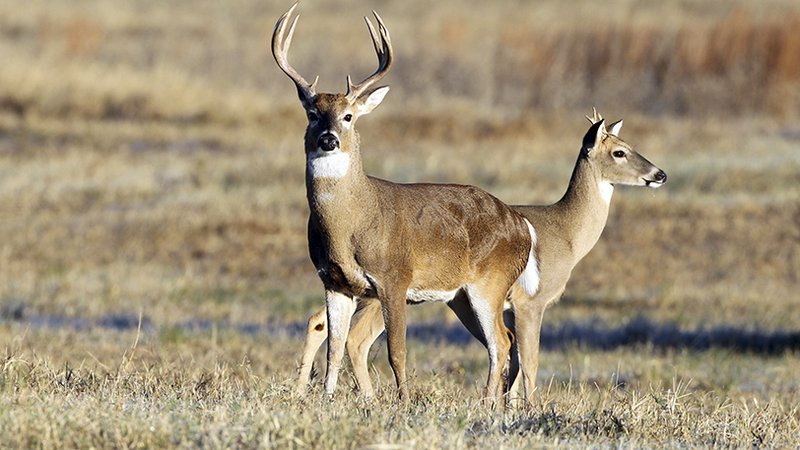Early birds may not always get the deer
ON 11-06-2019

Nov. 6, 2019
Randy Zellers
Assistant Chief of Communications
LITTLE ROCK — Some deer hunters will sit in a stand from sunup to sundown, but most hunting plans revolve around spending a few hours at the beginning of the day before taking a break to eat and rest, then revisiting their hunting site in late afternoon and sitting until the sun goes down. Both early morning and late evening seem to be prime time for deer hunting, but which one is best?
According to Jeremy Brown, the Arkansas Game and Fish Commission’s Assistant Deer Coordinator, most hunters tend to say they have more success during their afternoon hunts than they do during morning hunts, but that may be a result of hunter preference.
“Most hunters tend to go more often in the afternoons than in the morning,” Brown said. “It’s just more comfortable. It’s going to be during the warmer part of the day, and you don’t have to wake up extra early and try to find your stand in the dark. Because more hunting time is put in during the afternoon, more deer are seen then.”

Brown says deer, by nature, tend to be more active during dusk and dawn time periods, but that doesn’t mean they don’t move at all during the day.
“During the early season and late season, when deer movements are based on feeding areas, both bucks and does are going to get up, eat and drink every 4 to 6 hours, regardless of the time of day,” Brown said. “They definitely move more during the morning and evening, but there’s always a chance to catch a deer milling about, especially near thick areas where they have more cover.”
Around the second week of November, deer movement increases dramatically, thanks to the white-tailed deer’s breeding season. Bucks that normally would stick to a morning and evening routine lose their sense of time and spend their days searching out receptive does.
“Any given doe is only going to be in estrus for about 24-48 hours, so bucks are constantly moving to find them,” Brown said. “If she isn’t bred during that one- to two-day window, it will be another 28 days or so before she comes back into estrus. Having balanced sex ratios in the area you hunt will help increase rutting activity and provide more opportunities to catch a buck roaming during daylight hours.”
During November, Brown still spends more time in the deer woods during the afternoon than mornings, but it’s more a matter of convenience and when he’s able to take a few hours off work to enjoy a hunt.
“If I have my choice, I’m going to stay out as long as possible during the rut,” Brown said. “You can’t get them if you’re not out there, and there’s no telling when a good mature buck will cross your path when the rut is on.”
Recent News
Subscribe to Our Weekly Newsletter E-mails
Don’t miss another issue. Sign up now to receive the AGFC Wildlife Weekly Newsletter in your mailbox every Wednesday afternoon (Waterfowl Reports are published weekly during waterfowl season and periodically outside the season). Fishing Reports arrive on Thursdays. Fill in the following fields and hit submit. Thanks, and welcome!


